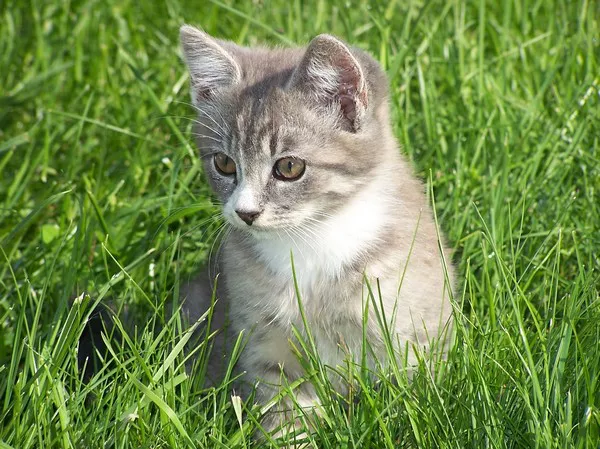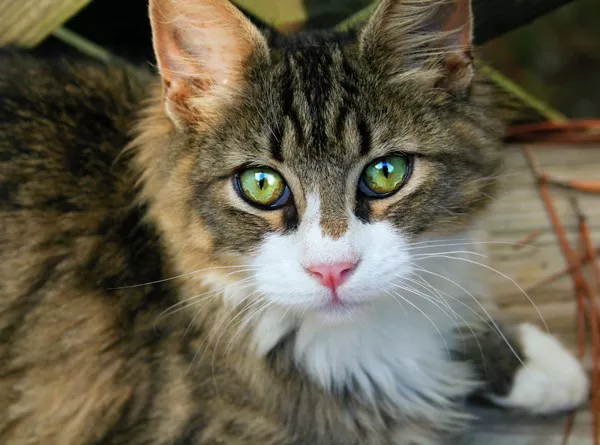Cats are beloved companions, and as responsible pet owners, it is crucial to ensure their overall health, including their dental hygiene. While many people focus on a cat’s coat, weight, and behavior as indicators of health, the condition of a cat’s teeth is equally important. Healthy teeth are vital for a cat’s ability to eat, play, and maintain overall well-being. This essay will explore what healthy cat teeth look like, the importance of dental care, common dental issues, and how to maintain your cat’s oral health.
The Importance of Healthy Teeth
Dental health in cats is often overlooked, yet it plays a significant role in their overall health. Healthy teeth and gums are essential for several reasons:
Eating and Nutrition: Cats rely on their teeth to chew and consume their food. Healthy teeth allow them to eat a balanced diet, which is crucial for their overall health and energy levels.
Prevention of Pain and Discomfort: Dental issues can lead to pain, which may affect a cat’s behavior, appetite, and quality of life. Healthy teeth help prevent conditions that cause discomfort.
Prevention of Systemic Diseases: Poor dental health can lead to periodontal disease, which can result in bacteria entering the bloodstream and affecting vital organs such as the heart, liver, and kidneys.
Overall Well-being: Maintaining dental health contributes to a cat’s happiness and well-being, allowing them to engage in normal activities such as playing and grooming.
What Do Healthy Cat Teeth Look Like?
Healthy cat teeth exhibit several key characteristics. Understanding these features can help you monitor your cat’s dental health effectively.
Color
White and Clean: Healthy cat teeth should be predominantly white. A slight off-white or ivory color is normal, but yellowing or brown discoloration can indicate plaque buildup or dental disease.
No Staining: Healthy teeth should not have any dark stains or spots. Staining can result from poor dental hygiene or dietary factors.
Structure
Intact and Whole: Healthy teeth should be intact with no chips, cracks, or missing pieces. Any damage to the teeth can affect a cat’s ability to eat and lead to pain.
Proper Alignment: The teeth should be properly aligned in the mouth. Misalignment can lead to uneven wear and increased risk of dental problems.
Gums
Pink and Firm: The gums surrounding healthy teeth should be a healthy pink color. Swollen, red, or bleeding gums are signs of periodontal disease.
No Recession: Healthy gums should fit snugly around the teeth without any recession or pulling away from the tooth surface.
Breath
Fresh Breath: While all cats have a natural odor, healthy cat breath should not be overwhelmingly foul. Bad breath can indicate dental issues or systemic health problems.
Absence of Tartar and Plaque
Minimal Tartar Buildup: Healthy teeth should have little to no visible tartar. Tartar appears as a hard, yellowish-brown substance that can accumulate on teeth.
No Plaque: Plaque is a soft, sticky film of bacteria that forms on teeth. In healthy cats, plaque should be minimal and easily managed with regular dental care.
Common Dental Issues in Cats
Despite the importance of dental health, many cats suffer from dental issues. Understanding these common problems can help you recognize when your cat may need veterinary attention.
Periodontal Disease
Periodontal disease is one of the most common dental issues in cats. It occurs when plaque and tartar buildup leads to inflammation and infection of the gums. Signs of periodontal disease include:
Red, Swollen Gums: Healthy gums are pink and firm. Infected gums may appear red and swollen.
Bad Breath: Foul-smelling breath is often a sign of periodontal disease.
Loose Teeth: Advanced periodontal disease can result in tooth loss or mobility.
Tooth Resorption
Tooth resorption is a condition where the body begins to break down and absorb the structure of a tooth. This condition can be painful and is often seen in cats. Signs include:
Visible Lesions: Resorptive lesions may be visible on the tooth surface, appearing as red or inflamed areas.
Sensitivity: Cats may show signs of pain when eating or chewing.
Gingivitis
Gingivitis is inflammation of the gums and is often the first stage of periodontal disease. Signs of gingivitis include:
Redness and Swelling: The gums may appear red and swollen.
Bleeding: Gums may bleed when touched or during brushing.
Stomatitis
Stomatitis is a severe inflammation of the mouth and can be very painful for cats. It can be caused by dental disease, viral infections, or immune system disorders. Signs include:
Severe Oral Pain: Cats may have difficulty eating or grooming due to pain.
Excessive Salivation: Increased drooling can occur due to oral discomfort.
Dental Fractures
Dental fractures can occur due to trauma or chewing on hard objects. Signs of dental fractures include:
Visible Cracks or Chips: Fractured teeth may have visible damage.
Pain or Discomfort: Cats may show signs of pain when chewing or may avoid using the affected side of their mouth.
Factors Influencing Dental Health
Several factors can influence a cat’s dental health. Understanding these factors can help you take proactive steps to maintain your cat’s oral hygiene.
Diet
Quality of Food: High-quality cat food that is rich in protein and low in carbohydrates can help maintain dental health. Some dry foods are specifically formulated to reduce plaque and tartar buildup.
Dental Treats: Certain treats are designed to promote dental health by mechanically cleaning the teeth as the cat chews.
Age
Young Cats: Kittens typically have their baby teeth, which eventually fall out to make way for adult teeth. Monitoring the transition from baby to adult teeth is essential for ensuring proper dental health.
Senior Cats: Older cats are more prone to dental issues such as periodontal disease and tooth resorption. Regular dental check-ups become increasingly important as cats age.
Genetics
Breed Predispositions: Some breeds may be more prone to dental issues than others. For example, certain flat-faced breeds (brachycephalic breeds) may have dental crowding due to their jaw structure.
Oral Hygiene Practices
Regular Dental Care: Just like humans, cats benefit from regular dental care. Brushing your cat’s teeth, providing dental treats, and scheduling professional cleanings can help maintain oral health.
Veterinary Check-Ups: Regular veterinary visits allow for professional dental examinations and cleanings, helping to catch potential issues early.
Maintaining Your Cat’s Dental Health
Maintaining your cat’s dental health requires a proactive approach. Here are some practical tips for ensuring your cat has healthy teeth and gums:
Regular Teeth Brushing
Start Early: If possible, introduce teeth brushing to your cat at a young age to help them acclimate to the process.
Use Cat-Safe Toothpaste: Always use toothpaste specifically formulated for cats, as human toothpaste can be harmful to them.
Choose the Right Brush: Use a toothbrush designed for cats or a finger brush to make the process easier.
Provide Dental Treats and Toys
Dental Chews: Offer dental treats that are designed to reduce plaque and tartar buildup. Look for products approved by veterinary dental associations.
Chew Toys: Provide toys that encourage chewing, as this can help clean teeth and promote oral health.
Regular Veterinary Check-Ups
Professional Cleanings: Schedule regular dental cleanings with your veterinarian. These cleanings can help remove tartar and plaque buildup that cannot be addressed through at-home care.
Monitor for Signs of Dental Issues: During veterinary visits, discuss any concerns about your cat’s dental health and ask for a thorough oral examination.
Diet and Nutrition
High-Quality Diet: Feed your cat a balanced diet that supports dental health. Consult your veterinarian for recommendations on the best food for your cat’s specific needs.
Hydration: Ensure your cat has access to fresh water at all times, as proper hydration is important for overall health, including dental health.
Monitor Oral Health at Home
Regular Checks: Regularly check your cat’s teeth and gums for any signs of problems, such as redness, swelling, or unusual odors.
Behavior Changes: Pay attention to any changes in your cat’s eating habits or behaviors that may indicate dental discomfort.
Recognizing Signs of Dental Problems
Being aware of the signs of dental problems is crucial for early intervention. Here are some symptoms to watch for:
Bad Breath
While some odor is normal, persistent bad breath can indicate underlying dental issues.
Difficulty Eating
If your cat is reluctant to eat or shows signs of pain while chewing, it may indicate dental discomfort.
Excessive Drooling
Increased salivation can be a sign of dental pain or oral disease.
Swollen or Bleeding Gums
Any signs of gum inflammation, such as redness or bleeding, should prompt a veterinary visit.
Loose or Missing Teeth
If you notice loose teeth or teeth that have fallen out, it’s essential to seek veterinary care.
Conclusion
Healthy teeth are essential for a cat’s overall well-being and quality of life. By understanding what healthy cat teeth look like, recognizing the signs of dental issues, and implementing preventive care measures, you can help ensure your feline companion maintains optimal dental health. Regular dental check-ups, proper nutrition, and at-home dental care are critical components of maintaining your cat’s oral hygiene. As a responsible pet owner, prioritizing your cat’s dental health will contribute to their happiness and longevity, allowing them to enjoy a fulfilling life by your side.
Related topic:

























